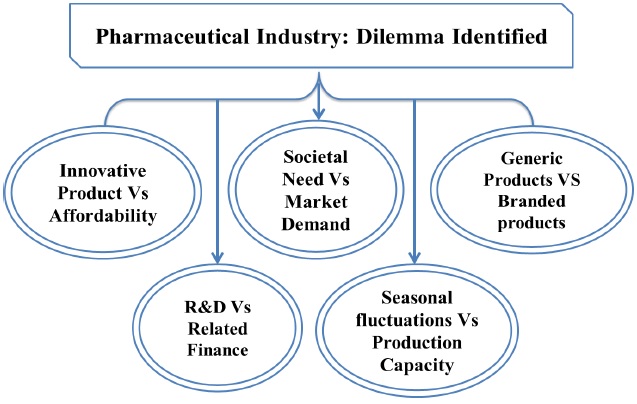Dilemma to Dominance: Decoding the Evolution of the Indian Pharmaceutical Industry - A Case Study
DOI:
https://doi.org/10.31033/abjar.2.4.5Keywords:
pharmaceuticals, pharmaceutical industry, indian pharma sector, challenges in indian pharma sectorAbstract
The Indian pharmaceutical industry has undergone a significant evolution, transitioning from a domestically-focused sector to a global powerhouse. Initially, Indian pharmaceutical companies primarily catered to domestic healthcare needs. However, with the implementation of economic reforms in the 1990s, the industry witnessed rapid growth and expanded into international markets. The Indian pharmaceutical industry has experienced a remarkable transformation, establishing itself as a global leader in the production and export of generic drugs. The industry has demonstrated superior growth performance, making it one of the fastest-growing sectors worldwide. Productivity levels and innovation play a significant role in determining competitiveness, and the Indian pharmaceutical industry has shown impressive capabilities in these areas. Government policies have been instrumental in driving the industry's self-sufficiency and internationalization. The establishment of public sector pharmaceutical enterprises and the introduction of intellectual property regulations, pricing control, and research and development (R&D) support have propelled the industry's growth.
This case study aims to provide an in-depth analysis of the journey of the Indian pharmaceutical industry, exploring its growth, challenges, and the dilemma it faces in balancing innovation and affordability. By examining the sector's perspective, challenges, and identified dilemmas, this case study aims to equip readers with a comprehensive understanding of the industry. The case delves into the journey and challenges faced by the Indian pharmaceutical industry. It investigates the industry's growth, the perspective of Indian pharmaceutical companies, the challenges they encounter, and the identified dilemmas. The case also provides teaching notes and objectives to enhance the readers' knowledge and decision-making skills within the pharmaceutical industry.
Downloads
References
Chittoor, R., Sarkar, M., Ray, S., & Aulakh, P. S. (2009). Third-world copycats to emerging multinationals: institutional changes and organizational transformation in the Indian pharmaceutical industry. Organization Science, 20(1), 187–205. doi:10.1287/orsc.1080.0377.
Dinar Kale, & Steve Little. (2007). From imitation to innovation: The evolution of R&D capabilities and learning processes in the Indian pharmaceutical industry. Technology Analysis & Strategic Management, 19(5), 589-609. doi: 10.1080/09537320701521317.
Nandy, M. (2022). Global competitiveness of pharmaceutical industry of India: Trends and strategies. in Relationship between R&D and Financial Performance in Indian Pharmaceutical Industry. Singapore: Palgrave Macmillan. doi: 10.1007/978-981-16-6921-7_5.
http://dx.doi.org/10.1108/JBIM-0r7-2020-0365.
Siagian RC, & Ayuningtyas D. (2019). Gap analysis for drug development policy-making: An attempt to close the gap between policy and its implementation. PLoS ONE, 14(8), e0220605. doi: 10.1371/journal.pone.0220605.
Hoque, A., & Das, S. (2021). Trends in productivity growth of Indian pharmaceutical industry: A growth accounting analysis. Journal of Pharmaceutical Research International, 33(47A), 437–446. doi: 10.9734/jpri/2021/v33i47A33031.
Zoltán Lakner, Anna Kiss József Popp, Zoltán Zéman, Domicián Máté and Judit Oláh. From basic research to competitiveness: An econometric analysis of the global pharmaceutical sector. doi: 10.3390/su11113125.
Singh, K., & Azhar, N. (2022). Impact of patent (Amendment) act, 2005 on Indian pharmaceutical industry with reference to R&D expenditure, profit, export and sales. International Journal of Health Sciences, 6(S2), 11538–11557. doi: 10.53730/ijhs.v6nS2.8112.

Downloads
Published
How to Cite
Issue
Section
ARK
License
Copyright (c) 2023 Anushree Bose, Dr. Rajesh K. Pandey

This work is licensed under a Creative Commons Attribution 4.0 International License.
Research Articles in 'Applied Science and Biotechnology Journal for Advanced Research' are Open Access articles published under the Creative Commons CC BY License Creative Commons Attribution 4.0 International License http://creativecommons.org/licenses/by/4.0/. This license allows you to share – copy and redistribute the material in any medium or format. Adapt – remix, transform, and build upon the material for any purpose, even commercially.










